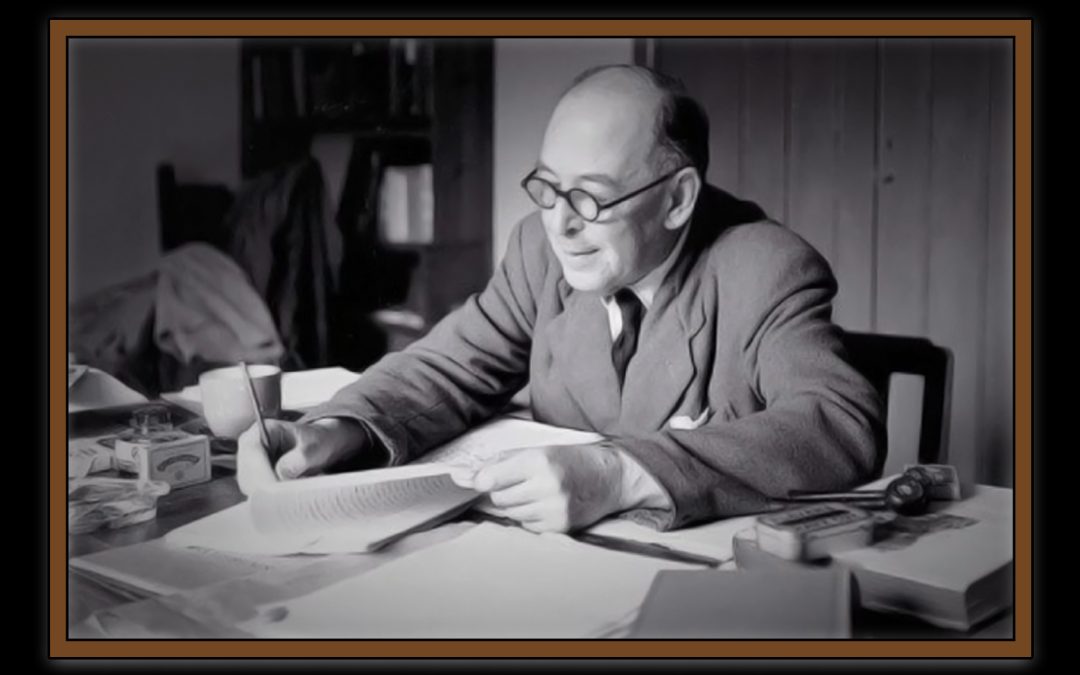On the 7th of May, 1989, the great Pope Saint John Paul II gave a short address at the Vatican on the subject of the Church’s relationship with media. During that message he said these words: “The question confronting the Church today is not any longer whether the man in the street can grasp a religious message, but how to employ the communications media so as to let him have the full impact of the gospel message” (“Religion in the Mass Media”, 5). The Pope was keenly aware of the growing influence of all forms of media and how widespread and influential they would come to be in forming the minds and imaginations of future generations. And he was right: communications media may be the best way to say what needs to be said to the modern culture.
The Challenge
We’re all familiar with the Parable of the Sower. Jesus tells a story in the Gospels of a man who sows some seeds in the earth. Some seeds fall on rocky ground, some fall among thorns, and others on the wayside. These seeds do not yield a good crop. Some seeds, however, fall in rich soil, and these seeds grow to yield a good crop, “some a hundredfold, some sixty, some thirty”(Mt. 13:8). Jesus goes on to explain to his disciples the meaning of the story. The sower is the one who proclaims the Good News; the seed is the Good News itself; the various surfaces are the different responses of those who hear the Good News. Many reject it or do not receive it well, and so the Good News does not have a chance to grow and flourish in them. Those represented by the rich soil receive the Good News, nourish it, and thus lead flourishing and fruitful lives.
We live in a Christian culture here in East Texas. Situated in the Bible Belt, we are well positioned to be good soil, open and receptive to the Good News Jesus came to give us. Often, however, living in the midst of a Christian culture can actually make it harder to receive the Good News. There is a human tendency to take the familiar for granted and become desensitized to it. Paradoxically, it can be harder to truly come to know and love Christ in a culture with a church on every corner than in a secular culture where the life-giving value of the Gospel can be clearly seen in contrast with its absence. The challenge for those of us living in the Diocese of Tyler, then, is how to truly be ‘good soil’ for the Gospel. Somehow, we need to learn to see the Gospel anew, in all of its splendor. This is our challenge.
C. S. Lewis’ Insight
I think that Catholic media—Catholic film in particular—is one answer to this challenge. C. S. Lewis, well-known and loved among Christian thinkers of the last century for his works of Christian apologetics, is mostly remembered in popular culture for his series of children’s books: The Chronicles of Narnia. Lewis was a storyteller; he loved stories. He also believed they had real value in conveying religious themes.
The Chronicles of Narnia is an allegory. The lion, Aslan, represents Jesus. In the first book, The Lion, the Witch, and the Wardrobe, Aslan dies in place of Edmund, who represents sinful humanity, and then comes back to life after he has been killed. It is literally the story of Jesus’ Passion, Death, and Resurrection in the form of an allegorical fantasy. Now, it is important to note that Lewis did not set out to write a Christian allegory at first. The Narnia chronicles started with an image that Lewis could not get out of his head. In an essay that he wrote, entitled, “Sometimes Fairy Stories May Say Best What’s To Be Said”, Lewis explains how Narnia came about:
Some people seem to think that I began by asking myself how I could say something about Christianity to children… This is all pure moonshine. I couldn’t write in that way at all. Everything began with images; a faun carrying an umbrella, a queen on a sledge, a magnificent lion. At first there wasn’t even anything Christian about them; that element pushed itself of its own accord. It was part of the bubbling.
(C. S. Lewis, On Stories. New York: Harper Collins, 1982)
This should not surprise us. Lewis was a true storyteller, not a propagandist. True art does not begin with an agenda: it wells up from the heart and imagination of the artist. Then, in inevitable succession, the beliefs and worldview of the storyteller will be infused into those raw materials. It is at this point, as Narnia begins to take shape and Lewis begins seeing the religious potential of his ideas, that he makes the discovery we have been looking for.
Then of course the Man in me began to have his turn. I thought I saw how stories of this kind could steal past a certain inhibition which had paralysed much of my own religion in childhood. Why did one find it so hard to feel as one was told one ought to feel about God or about the sufferings of Christ? I thought that the chief reason was that one was told one ought to. An obligation to feel can freeze feelings. And reverence itself did harm… But supposing that by casting all these things into an imaginary world, stripping then of their stained-glass and Sunday school associations, one could make them for the first time appear in their real potency? Could one not thus steal past those watchful dragons? I thought one could.
(C. S. Lewis, On Stories. New York: Harper Collins, 1982)
Lewis’ observation here is remarkably simple, and yet it is profound in its implications. Put in different words, he is saying that a well-told story can pass through the head to touch the heart. It can help us experience the truth of the Gospel in a way that mere words cannot. Once we understand the transcendency of stories over mere words, we are in a better position to fully appreciate Pope John Paul’s statement: “The question confronting the Church today is not any longer whether the man in the street can grasp a religious message, but how to employ the communications media so as to let him have the full impact of the gospel message.” A good film, combining the power of story with visual media, is perhaps the perfect medium to steal past the watchful dragon of familiarity and touch the heart.
Case in Point
The religious potential of film, then, lies in its power to cut through the head to the heart. In this way it is a particularly suitable solution to the challenges of a Christian culture like ours where the obstacle is combating desensitized faith, a faith which too easily may think it knows all that Christ has to offer.
A movie that illustrates what Pope John Paul and C. S. Lewis were getting at is the 1959 epic, Ben-Hur. Starring one of the great Hollywood stars of the era, Charlton Heston, the film tells the story of Judah, a man living in 1st century Israel whose life is profoundly impacted by encountering Jesus of Nazareth. The film is widely acknowledged as one of the best films in American cinema. Ben-Hur features compelling characters, exciting action sequences, a great soundtrack, and much more to recommend it. What makes the film significant for our purposes, however, is the relationship of the central character to Jesus, and more specifically, how the filmmakers chose to portray Christ.
Fascinatingly, we never see Jesus’ face. In the scenes in which Jesus is present, we only ever see him turned away from the camera. By shooting the character of Jesus this way, the filmmakers focus our attention on how Jesus affects those around him. This was a bold creative choice, but it is incredibly effective. After all, no actor playing the role of Jesus can ever do it justice. To play the Son of God is an impossible undertaking. The filmmakers chose to leave the image of God Incarnate to our imagination, to inspire our imagination. In the words of C. S. Lewis, they made Jesus “appear for the first time in [his] real potency.” Through a reverent yet new and bold portrayal of the person of Jesus and the way in which he affected those with whom he came in contact, the filmmakers allow us, the viewers, to experience “the full impact of the gospel message.”
Conclusion
It is time for us to take the words of Pope John Paul to heart and to act on them. Those of us who care about communicating the riches of the Gospel cannot afford to ignore the power and importance of visual media. Here at the St. Philip Institute of Catechesis and Evangelization, communicating the riches of the Gospel is a task near and dear to our hearts, and in his Constitution on Teaching, Bishop Strickland emphasized the importance of the communications media in this work:
I desire that the Institute take the best techniques from the world of media to enhance teaching in the Diocese… technology has provided myriad means of direct engagement, and the Institute will make use of these tools. The Church has always employed appropriate technological advancement in service of the Gospel, and our interconnected world provides the latest of these opportunities. The Institute will employ these techniques in service of the mission of the Diocese.
(Constitution on Teaching, 2:8)
I strongly believe that one way to incorporate the Bishop’s mandate is through film: to combine the power of visual media with the inherent power of story in order to communicate the riches of the Gospel in a compelling way. I want the St Philip Institute to pioneer the way in the use of narrative media for the New Evangelization. By using film to tell stories that convey an authentically Catholic worldview, we will be responding to the call to engage with the media in service of the Gospel.
We need to Catholicize our entertainment, to make and view films which direct us to the Divine and allow them to cut us to the heart. Perhaps then we will come to see the Gospel anew, to revitalize our Christian culture, and become good soil which allows the Gospel to grow and bear its fruit in our lives.



